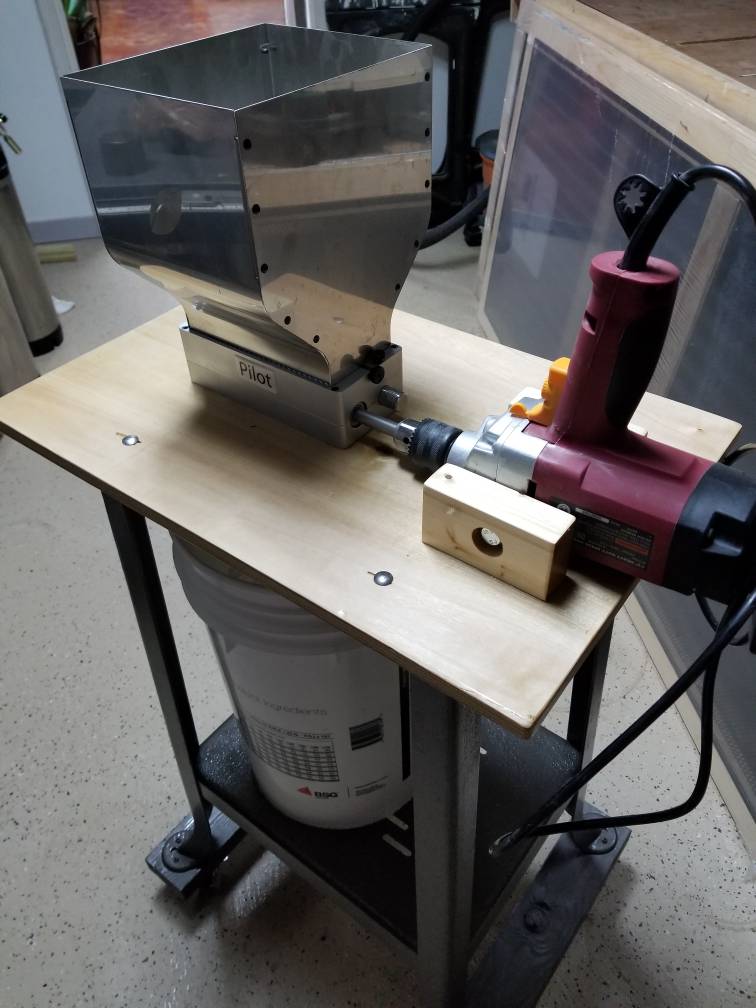Actually, there are several reasons I went the way I did (Monster Mill w/ a separate motor).
One is that I have been able to slow down the crush. I had to run my drill pretty fast to get enough power to crush the grain; slow down and bog down was the rule.
I'm trying to implement some LODO brewing techniques, and two of the components are to crush as slow as you can (I'm at 180 rpm, far slower than the drill), and to crush as close to dough-in as you can. In both cases it's supposed to minimize oxidation. Fast crushing seems to create more dust, which increases the surface area of the crushed grain--against which oxidation can work. There may also be the generation of some heat.
My new mill setup is much faster--I'm under 2 minutes to crush 12 pounds of grain. I don't have to hold the drill, don't have to play around with it, and the tear-down at the end is nothing. There is none.
I put a bucket under the mill, dump the grain in, turn on the mill, and in 2 minutes I'm heading to the garage to dough-in.
I suspect also that at some point I'll increase my capacity to 10 gallons and the ability of the mill to chew through grain fast but slowly will matter even more.
One of the beauties of brewing is that everybody gets to make their own choices.










































![Craft A Brew - Safale S-04 Dry Yeast - Fermentis - English Ale Dry Yeast - For English and American Ales and Hard Apple Ciders - Ingredients for Home Brewing - Beer Making Supplies - [1 Pack]](https://m.media-amazon.com/images/I/41fVGNh6JfL._SL500_.jpg)

















